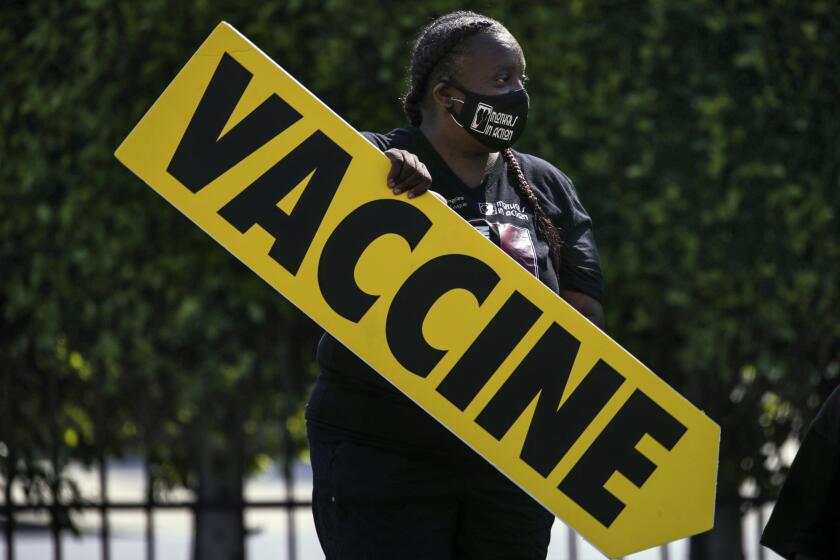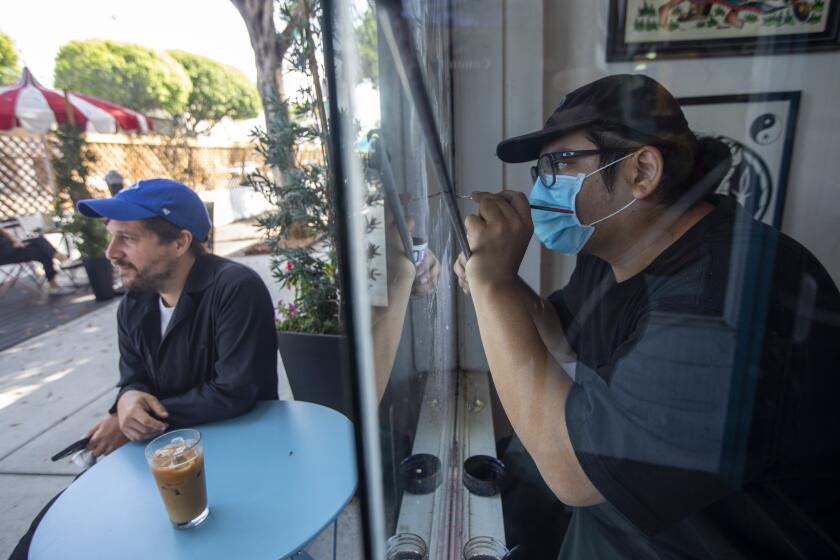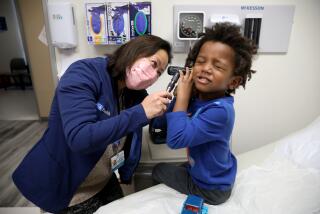Telehealth leapt forward with COVID-19. Who was left behind?
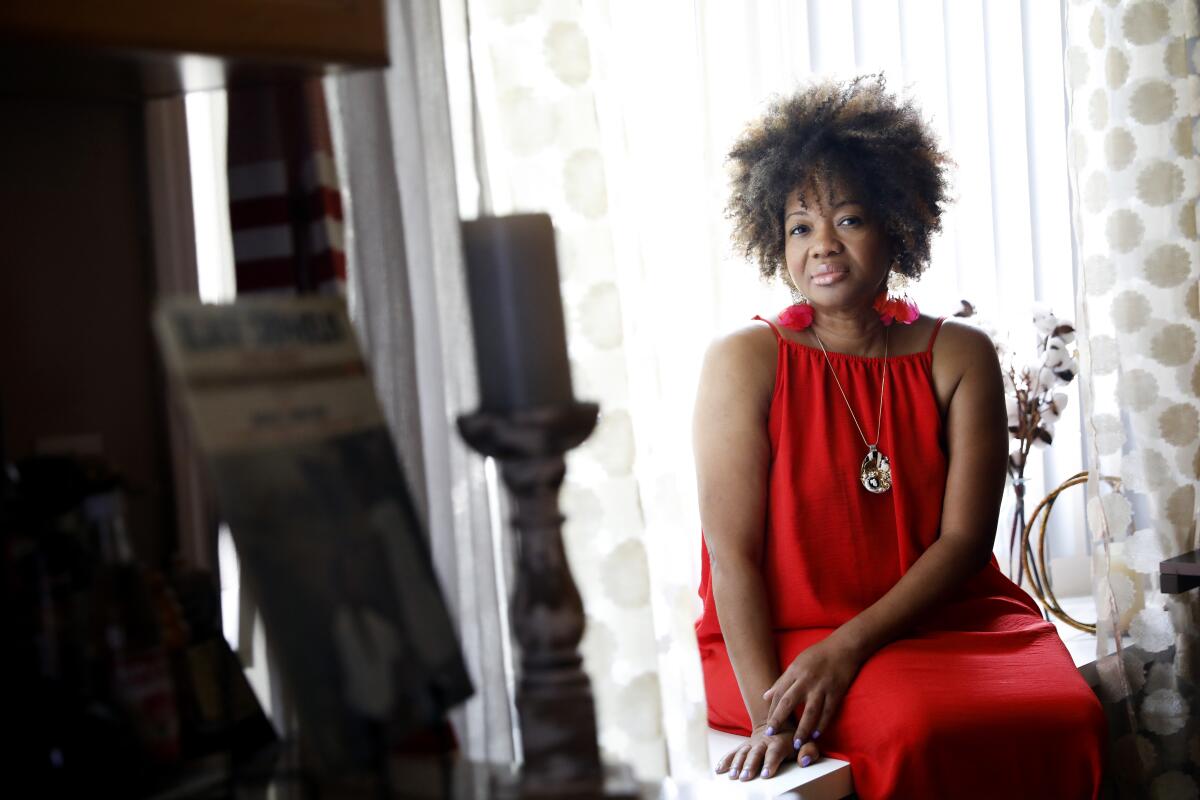
- Share via
When Johnnett Kent learned she had lung cancer, the COVID-19 pandemic was already descending on California. Her doctor didn’t want the 49-year-old to risk her health by heading into a crowded clinic between surgery, radiation and chemotherapy.
So she started checking in with Kent through her smartphone. Kent was skeptical of the arrangement at first, thinking, “Can this really work?”
Her Wi-Fi was glitchy and video calls froze as she tried to talk from her bed. Sometimes the internet was shut off entirely at her Burbank apartment because Kent had lost work and was short on money to pay bills.
But when the video froze, her doctor would make an audio call to go over her symptoms. Her oncologist monitored her vital signs from afar, providing Kent a device with a sensor that attaches to her body. At one point, she ended up getting a blood transfusion after her oncologist got concerned about the signs it detected.
It “kind of saved my life,” said Kent, a patient with Los Angeles Christian Health Centers and Beverly Hills Cancer Center. “Had I not had this access to technology, I might not be here.”
Now Kent is in remission and planning to rebuild her business as a private chef and caterer as the pandemic has eased its grip on daily life. And she still wants to hang on to telehealth as an option.
Telehealth, which went up dramatically in use during the COVID-19 pandemic, has long been envisioned as a way to help patients without forcing them to trek to a clinic. Reaching a doctor by computer or phone can be easier for patients who can’t take time off work, need to juggle child care or have to take a string of buses to get to a medical office.
But the rise of telehealth has also raised concerns about perpetuating unequal access to care, partly due to the “digital divide.” Poorer residents remain much less likely than wealthy ones to have broadband internet access, according to the Pew Research Center. Rural areas are also at a disadvantage for broadband.
Video visits can gobble up limited data on phone plans and are especially hard for patients who don’t have a private place to talk, including people living in crowded homes or on the streets. And downloading a new app or logging in to an online platform for medical visits can be daunting for patients who aren’t at ease with the technology.
In June, 20% of Los Angeles County’s coronavirus cases were among fully vaccinated residents. But that doesn’t tell the full story.
In South Gate, Lourdes Bernis said her late mother, who had been diagnosed with Alzheimer’s and Parkinson’s, seemed confused during video visits with her doctors. When one physician asked her to rate her pain on a scale of 1 to 10, she didn’t understand what he meant, Bernis said.
She helped her mother set up the videoconferences, but the process seemed difficult for seniors living alone. “They don’t know how to use this technology,” Bernis, who works as a health promotora with L.A. County, said in Spanish.
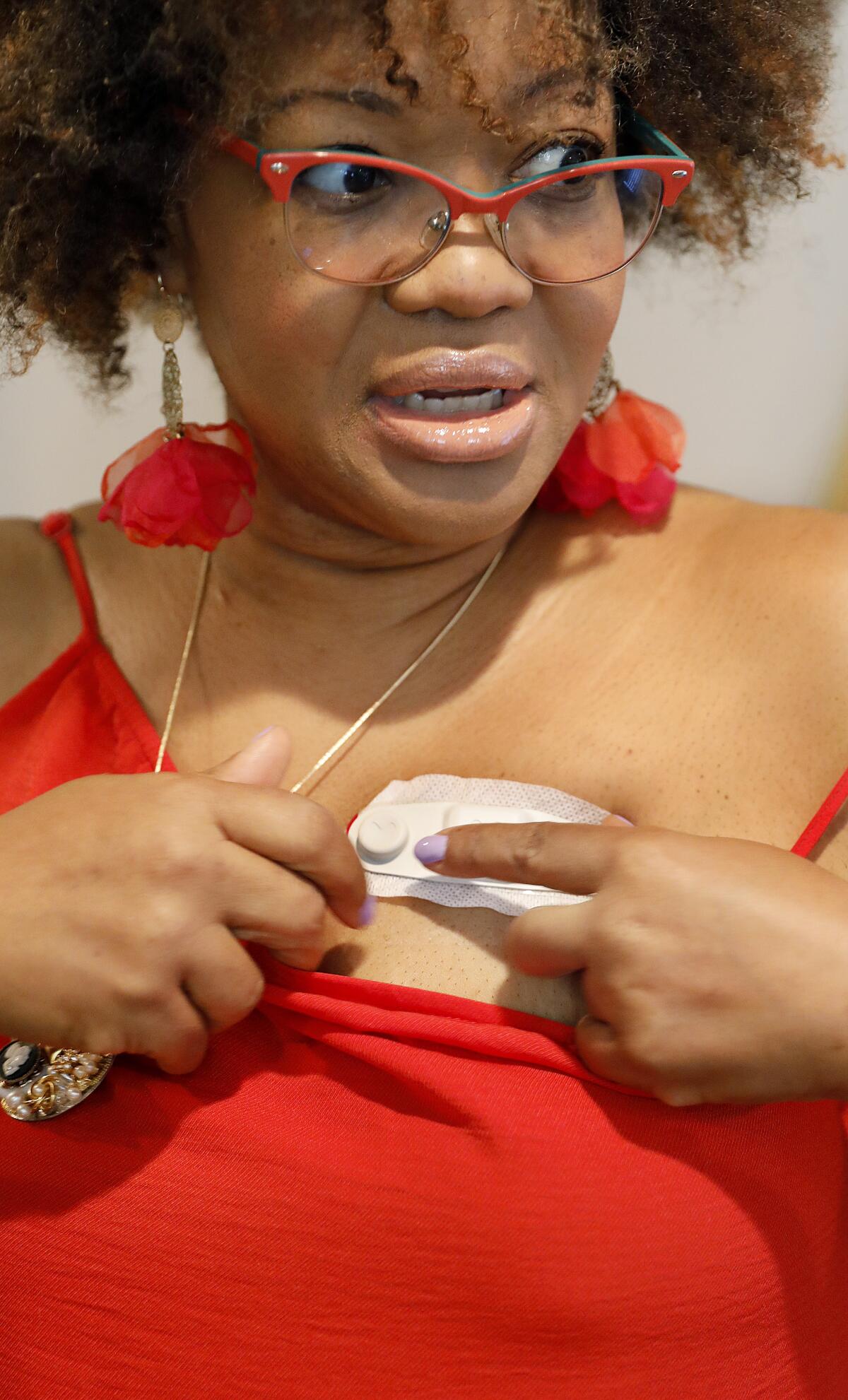
As telehealth boomed last year, eased by new flexibility in billing rules, “we were worried about which of our patients we might be leaving behind,” said Dr. Lauren Eberly, a fellow in cardiovascular medicine at the University of Pennsylvania.
Early in the pandemic, Eberly and other researchers found that people who are older or do not speak English were less likely to use either video or audio-only visits, along with patients of Asian descent. Video visits were a particular barrier for many groups and were used at lower rates by Black, Latinx and poorer patients, among others, their study found.
In addition, many people who were not fluent in English did not get telehealth in their preferred language, especially those who did not speak Spanish, according to research by the California Pan-Ethnic Health Network. Its surveys also found that Asian respondents were less likely to have a private place to keep a telehealth appointment and that Latinx respondents were most likely to report technological barriers such as a spotty internet connection.
Health providers are still grappling with those inequities: Telehealth use has fallen somewhat since the height of the pandemic, but many health providers say they can’t imagine going back to a strictly face-to-face practice.
Besides video or phone appointments, telehealth can also include remote monitoring and “store-and-forward” technology to send images or medical data to a provider. A California Health Benefits Review Program analysis of existing studies found mixed evidence for how telehealth compares with seeing a doctor in person, depending on what medical condition, specific kind of outcome and method was being studied.
The pandemic “has absolutely changed people’s view of what is possible,” said Center for Care Innovations President Sofi Bergkvist, whose organization launched a program to help “safety net” health providers improve virtual care.
“You can reach people, where they are, in a way that you couldn’t before,” Bergkvist said. “However, it really requires concentrated efforts — and it must not be at the expense of quality of care.”
At White Memorial Community Health Center, a Boyle Heights center that serves patients who are largely insured through Medi-Cal, telehealth will remain an important option for older, disabled or otherwise vulnerable patients who struggle with transportation, said Chief Executive Grace Floutsis.
The challenge, she said, is that many of those same patients have trouble downloading and accessing a new app for telehealth visits. So the center made a simple change: It started texting them links to click on for appointments.
The San Fernando Community Health Center launched a pilot program during the pandemic to remotely monitor some of its diabetes patients, giving them iPads and equipment such as a blood pressure monitor to feed information about their health to doctors without visiting the clinic.
The center fielded a team to handle any technological problems, and “if they don’t read or write, everything in the program is color-coded,” said Heidi Lennartz, its chief operating officer.
And L.A. Care, a publicly operated health plan, has been setting aside space in its “community resource centers” for private rooms for telehealth visits, a new addition for sites that offer classes on parenting and healthy cooking, Zumba and yoga, and giveaways of groceries and school supplies.
At a new center near Western Avenue and Pico Boulevard, community representative Haidy Juarez showed off a pair of small rooms each equipped with a laptop, headphones and a printer. Their goal is to provide people the privacy and technology that might make a telehealth appointment impossible at home.
Both rooms were sitting empty on a recent Monday: L.A. Care is still trying to get the word out to people about the option as they trickle back into the centers, said Mabel Ponce, a senior manager of its community resource centers.
When the pandemic hit, clinics had to find out from their patients: “Did they have computers? Did they have a webcam? Did they have a phone?” said Margarita Loeza, chief medical information officer for Venice Family Clinic. Some patients also needed equipment like a blood pressure monitor or a glucometer for telehealth visits.
“We started seeing how hard it was for people who didn’t have everything,” Loeza said.
At Venice Family Clinic, the bulk of telehealth visits are happening by phone rather than video, according to its staff.
Phone visits appear to have been crucial for poorer patients: As COVID-19 swept through California, federally qualified health centers that target underserved groups did the bulk of their telehealth visits by phone rather than video, according to research published in the Journal of the American Medical Assn.
Cruz Cubias, an 80-year-old diabetes patient living in South Park, was relieved to not to have to make the trip to a downtown clinic run by Eisner Health for routine visits during the pandemic. She relied on audio calls for her telehealth appointments. Cubias said her granddaughter has a phone that can make video calls, but she needs it to study.
One hiccup, Cubias said, was that she didn’t have a way to take her own blood pressure at home. But the doctor “understood what I was saying and I understood him,” said Cubias, who speaks Spanish.
Eberly said her study found that although Black and Latinx patients were less likely than white patients to use video visits, they were more likely to use telehealth in general, with the majority using phone calls. At Umma Community Clinic, Yohanna Barth-Rogers said “no-show” rates dropped with the rise of telehealth at the clinic’s centers.
“People would often take the call from work, and they’d step away for 15 minutes to talk to their doctor,” Barth-Rogers said. Phone visits might not always be ideal, she said, “but if that’s the only way they’re going to be seen, some access is better than no access.”
During the pandemic, California paved the way for telehealth for poorer patients by insisting that Medi-Cal reimburse providers at the same rate for audio and video visits as for in-person clinic visits. Before that, many clinics that serve low-income patients were unable to get reimbursed for telehealth visits.
In June, 20% of coronavirus cases in L.A. County were among vaccinated people. Health experts say that’s not surprising and point to the ultimate success of vaccines.
The California Primary Care Foundation and other groups have pushed to keep the policy as coronavirus cases have receded, arguing that phone visits must be included.
Warren Brodine, CEO of the Eisner Health/Pediatric and Family Medical Foundation, argued that phone calls can sometimes be better than a video call that could be overheard — for instance, discreetly checking with a patient whether they are safe at home — and can give patients more privacy. During the pandemic, “we had patients who were ducking in closets, who were going out behind the carport, trying to find anywhere that they could go,” Brodine said.
Keith T. Kanel, director of the Division of Practice Improvement at the Agency for Healthcare Research and Quality, said that paying doctors for phone visits has been the most contentious aspect of the telehealth debate as the pandemic ebbs. When COVID-19 hit, audio calls were “a reliable technology, and it was the one that was egalitarian,” Kanel said.
But there have been questions about the adequacy of phone visits: One recently published study found that rural patients in Canada were more satisfied with video than phone calls.
The California Health Benefits Review Program found evidence that phone visits seem to measure up to in-person care on physiological measures of how patients fare, but it was inconclusive on other measures, such as how often they went to the emergency room. Research on phone visits is thinner than on video visits.
Fraud has also been a concern among regulators. And the California Chamber of Commerce recently warned lawmakers that without clearer guidelines about reimbursing doctors for phone visits, “even the simplest and shortest patient-provider telephone interactions” could be reimbursed at the same level as face-to-face care, ramping up premiums.
State leaders decided both audio and video visits would be fully reimbursed through 2022, but the payment structure beyond that remains to be determined. Bergkvist said such uncertainty has held back some clinics from spending time or money improving telehealth.
“As long as there’s uncertainty, I think there’s many leaders that are sitting on the fence,” she said.
More to Read
Sign up for Essential California
The most important California stories and recommendations in your inbox every morning.
You may occasionally receive promotional content from the Los Angeles Times.
